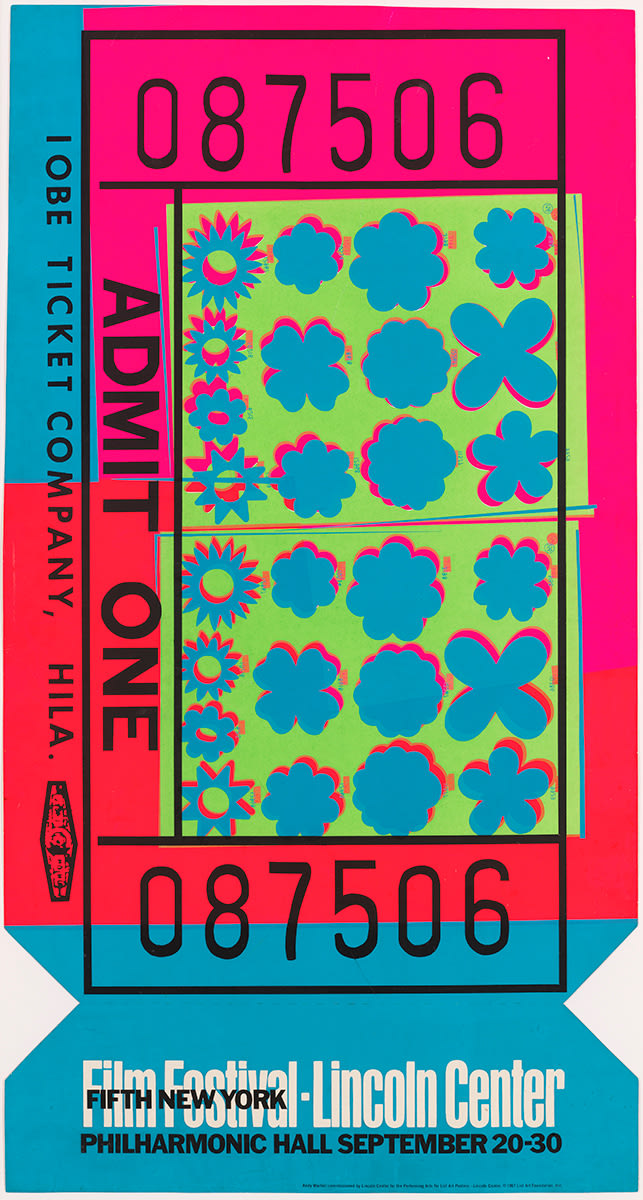
Andy Warhol was instrumental in challenging the conventions of art.
Celebrated for his depictions of unorthodox subjects such as movie stars and commercial products, Andy Warhol was instrumental in challenging the conventions of art. Paradoxically, Warhol, a painfully shy man who once said he would "like to disappear," became as famous as the celebrities he depicted through his art and his numerous appearances in the media.
Andy Warhol was born Andrew Warhola on August 6, 1928, in Pittsburgh, Pennsylvania, to immigrant parents from what is now Slovakia. He began creating art at a very young age and took art lessons at the Carnegie Institute between 1937 and 1941. Even at this preliminary stage, he was already working in a wide variety of media that included drawing, painting, photography, and creating projected cartoons. In 1945, Warhol attended the Carnegie Institute for Technology (now Carnegie Mellon University), where he studied pictorial design. One year later, he won an award for his drawings. He received his Bachelor of Fine Arts degree in 1949 and, immediately afterwards, moved to New York City where he roomed with his college friend, the artist Philip Pearlstein.
In New York, Warhol dropped the "a" from his last name and found work as a freelance graphic artist, producing drawings for magazines including Glamour (for which he made the celebrated illustrations for "Success is a Job in New York"), Harper's Bazaar, The New Yorker, Vogue, and Seventeen and advertisements, such as the shoe illustrations for I. Miller that appeared in The New York Times every Sunday. He was so successful as a commercial designer that his decorative, linear style became synonymous with elegance and a sophisticated, hip sensibility.
In addition to illustration, he also worked as a window decorator for such prominent stores as Tiffany & Co. and Bonwit Teller. In 1952, Warhol was recognized for his commercial work and won an Art Directors Club Medal for his newspaper advertisements. That same year, he had his first solo exhibition "Andy Warhol: Fifteen Drawings Based on the Writings of Truman Capote," at the Hugo Gallery in New York City. Capote would become friendly with Warhol, as would many writers and artists in New York City. Yet despite the fact that they knew each other for several decades, Capote would refer to Warhol as "a sphinx without a riddle" due to his enigmatic personality and extraordinary shyness.
Between 1954 and 1955, Warhol began concentrating on establishing a career in fine art. As opposed to the muscular, painterly quality of the Abstract Expressionist art that was dominant at the time, Warhol's drawings had a delicate, decorative quality to them. He experimented with the method that he used for creating his drawings, inventing a process that would allow him to transfer and repeat his images, as if both referencing Paul Klee's "transfer method," and anticipating his later use of the mechanical process of photo-silkscreening.
In 1960, Warhol began painting objects from everyday life, such as refrigerators, canned goods, and various other products. Increasingly, his subjects were derived from popular culture, as Warhol focused on painting advertisements, comic book characters, and newspaper headlines. By 1962, Warhol was producing his celebrated images of well-known commercial products, such as Campbell's soup and Coca-Cola, and celebrities, including Marilyn Monroe, Elvis Presley, Elizabeth Taylor, and Jackie Kennedy, all rendered in what became his signature style that combined stark contours, bright colors, and an aesthetic more associated with advertising than painting.
During the 1970s, Warhol focused on becoming more entrepreneurial. Many of his portraits were commissioned by a variety of celebrities and personalities. He also founded Interview magazine with Gerard Malanga. In his book The Philosophy of Andy Warhol, published in 1975, the artist acknowledges his ideas of the nature of art and how it is a potential moneymaking business. He continued with these ideals until his death in 1987. Despite the controversy around Warhol's art, his paintings were an immediate sensation and made him one of the most famous artists of his generation.
News
















